While it is fun to pronounce the name of this small to medium-size tree (cas-cah-LOH-tay), the real attraction lies in its yellow flowers and unique foliage. Beginning in the fall and continuing into winter, this tree is transformed when yellow flower spikes cover the entire tree, much to the delight of homeowners and pollinators alike. Cascalote trees are becoming increasingly popular throughout the U.S. Southwest. Whether grown as a large shrub or small tree, cascalote will thrive throughout hot summers and will handle light frosts, making it a must-have for your Southwestern landscape.
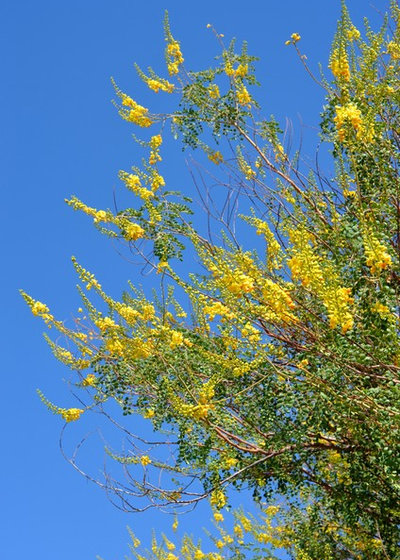
Noelle Johnson Landscape Consulting
Botanical name: Caesalpinia cacalacoCommon name: Cascalote
Origin: Native to Mexico
Where it will grow: Hardy to 20 degrees Fahrenheit (USDA zone 9;
find your zone)
Water requirement: Low. For best appearance water weekly in summer and once a month in winter.
Light requirement: Full sun
Mature size: 15 feet wide and 10 to 15 feet tall
Benefits and tolerances: Drought tolerant once established
Seasonal interest: Flowers in fall and winter
When to plant: Fall or spring
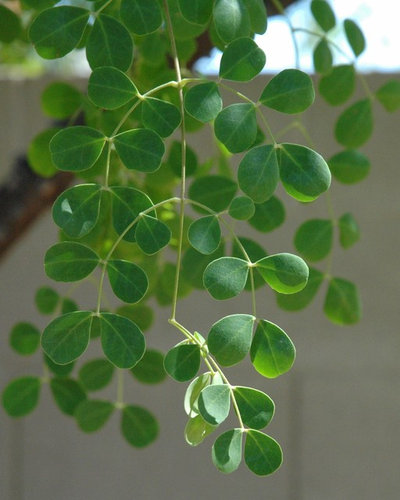
Noelle Johnson Landscape Consulting
Distinguishing traits. While the yellow flowers of cascalote take center stage once fall arrives, the foliage of this small tree is also quite attractive. Circular leaflets are borne on thorny branches.
In its natural form, cascalote grows into a large shrub. However, in the landscape it is often pruned into trees with either multiple trunks or a single trunk.
Evergreen during mild winters, cascalote trees will suffer frost damage when temperatures dip into the low 20s. They can handle hot, reflected sun easily.
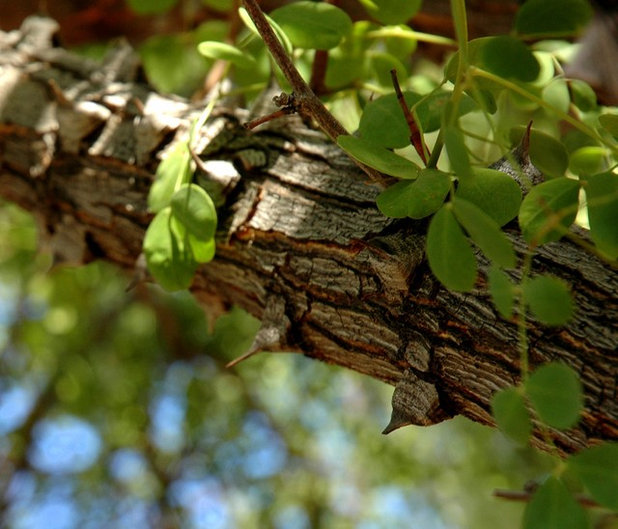
Noelle Johnson Landscape Consulting
After the beautiful flowers and decorative foliage, the thorns come to mind next. The thorns are considered by some to be ornamental. However, for those who want a thorn-free tree, there is a smooth variety of cascalote called 'Smoothie'.
The thorns can be easily managed by snipping off the sharp tip with hand pruners and keeping the tree away from pedestrian areas.
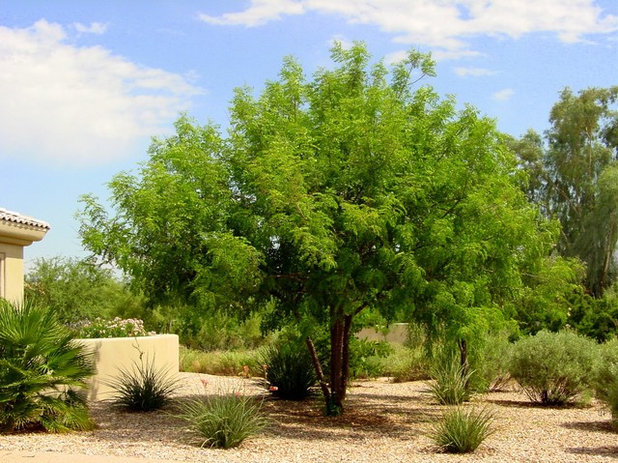
Noelle Johnson Landscape Consulting
How to use it. Use cascalote where its unique foliage and colorful flowers can be viewed from an outdoor seating area. Plant flowering perennials such as autumn sage,
trailing purple lantana (
Lantana montevidensis), Mexican honeysuckle or firecracker penstemon underneath the foliage, where they will enjoy the light, filtered shade that this small tree offers.
Cascalote is also a great choice for street medians, but should be kept away from parking lots due to its thorns, unless you're using the thornless variety.
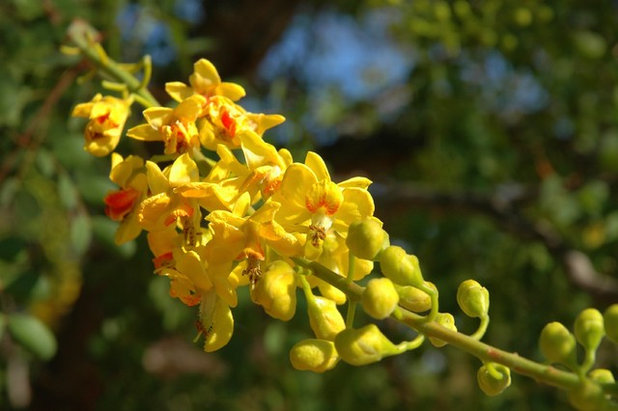
Noelle Johnson Landscape Consulting
Planting notes. Cascalote should be planted in full sun and in well-drained soil. The width of the hole should be at least three times that of the rootball, while the depth of the hole should be the same or a little less than the height of the rootball.
Young trees do best when fed with a slow-release fertilizer in spring and fall.
Prune to remove any frost-damaged growth in spring. Other pruning should be done in the summer to remove crossing branches and suckers.
More: What to Do in Your Garden Now





